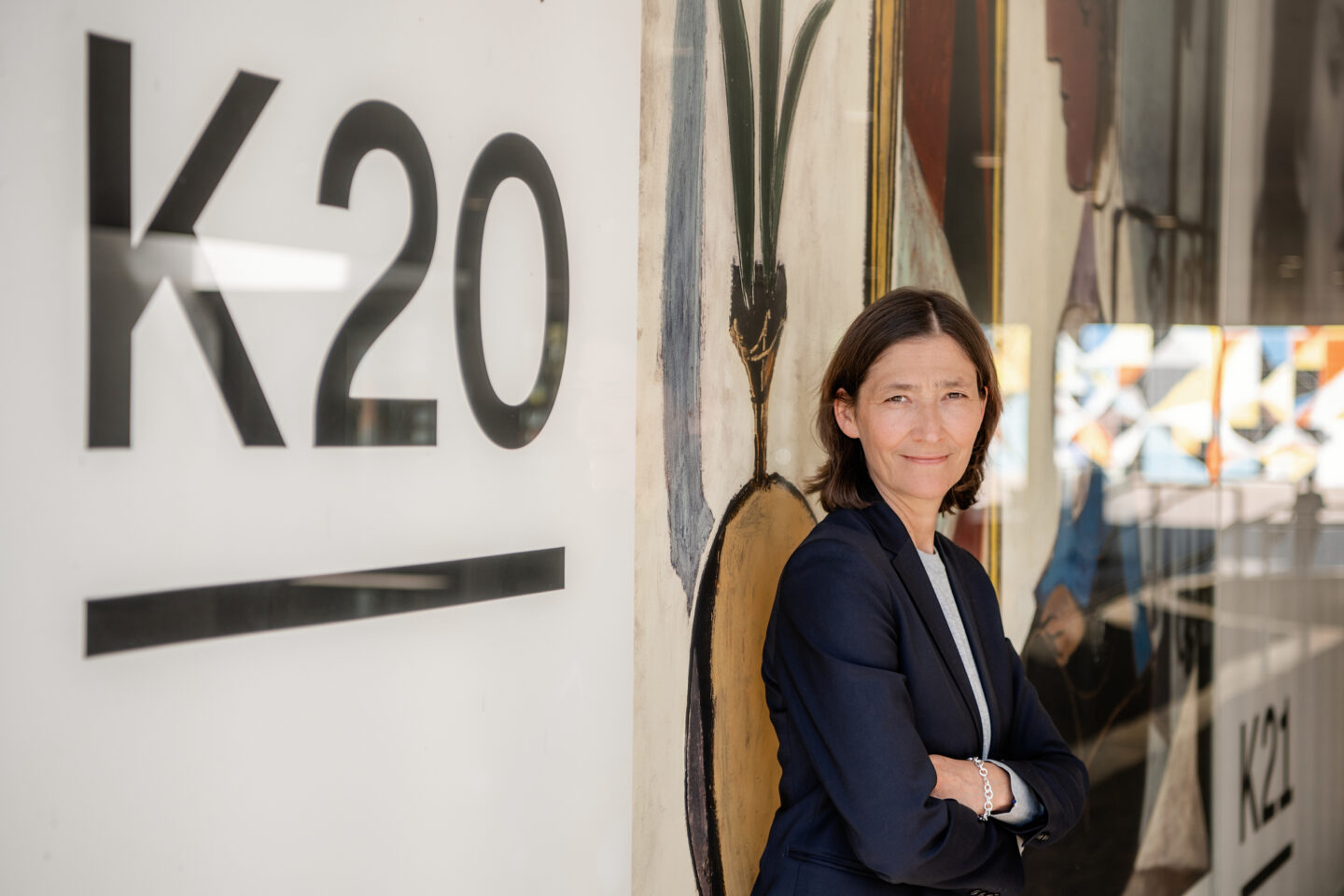Susanne Gaensheimer on Düsseldorf’s Appeal as an Art and Cultural Center


In our new series, Düsseldorf Talks, we ask people living or working in Düsseldorf about their ties to the city and take a closer look at inspiring, beloved, and frequently visited places and locations in the city.
Words: Annalena Roters and Chris Erik Thomas.
When Susanne Gaensheimer arrived in Düsseldorf in 2017 to become the director of the Kunstsammlung Nordrhein-Westfalen, she brought a mountain of experience from her time in Munich, New York, Münster, and Frankfurt. Following her time in the Independent Study Programme (ISP) at New York’s Whitney Museum of American Art from 1995 to 1996 and a traineeship at the Lenbachhaus in Munich from 1998 to 1999, she was appointed director of the Kunstverein Münster in 1999. After serving in that role until 2001, she became head of the collection of contemporary art at the Lenbachhaus (2002–2008), and finally director of the MMK in Frankfurt in 2009. It was during this time, in 2011, that she curated the German pavilion at the Venice Biennale — receiving the prestigious Golden Lion for her work.
It’s no surprise, given this impressive career, that Gaensheimer has made such an impact on Düsseldorf’s art scene. Her nearly six years at Kunstsammlung Nordrhein-Westfalen have seen her open the houses of the art collection to other disciplines, attract a younger audience, and offer a broad spectrum of art experiences. One need only look at exhibitions from the last six years by artists such as Carmen Herrera, Maria Hassabi, Raqs Media Collective, Banu Cennetoğlu, Cao Fei, Lutz Bacher, Raqs Media Collective, Anne Teresa De Keersmaeker to see how influential she has been. Dance, choreography, music, and new technologies have redefined the museum as an interdisciplinary space.
Gaensheimer has been a beacon of change, introducing the city to fresh positions and perspectives from a more international and diverse spectrum of artists. Her love for the city’s art community is clear in her work, but outside of the museum, she’s also fallen in love with the “vibrant, diverse, and eclectic” city of Düsseldorf.
You have been head of the Kunstsammlung Nordrhein Westfalen since 2017, and before that, you worked in Frankfurt. What was it like for you to come to Düsseldorf back then? What did you expect? What surprised you?
Of course, I knew before I came to Düsseldorf that this city is one of Germany’s art centers. But then I was surprised to see how diverse and lively the scene is here, not only in the visual arts but also in contemporary music and theater. So I was still able to discover a lot – even to this day.
Which art venue in Düsseldorf do you particularly recommend to our readers? What can you discover there, and what makes this place special?
There are many exciting and interesting art venues in Düsseldorf, especially among the galleries and private collections. With my children, I particularly enjoy going to the Kunstpalast. But to my guests, I mainly show the large exhibitions and the collection displays in the K20 and K21 of the Kunstsammlung.
After seeing an exhibition, where do you most like to drink your coffee or go out for a meal?
From day one, “Die Röstmeister” on Belsenplatz in Oberkassel was my favorite café. They have excellent coffee there and a very nice team. At lunchtime, I prefer to go to one of the many Japanese restaurants on Klosterstraße.
The beauty of Düsseldorf is that many artists and cultural practitioners live here.
Düsseldorf has a very rich art history. The academy has produced very successful artists, some of whom still live in the region. How do you assess the situation for young artists, curators, and creatives? Is Düsseldorf still a place that inspires young people?
The beauty of Düsseldorf is that many artists and cultural practitioners live here, and many of the graduates of the Kunstakademie stay in the city after their studies. It is particularly important to me that the Kunstsammlung is also a place of exchange and encounter with young artists, curators, and creatives. Our talk series, “K21 Encounters,” is aimed primarily at young experts whom we invite to come to talks, but also, through our acquisitions of young, local artists for the collection, we promote the local scene.
Can you give us a preview of the 2023 art year at the Kunstsammlung? What will be exhibited?
We start the new year on a high note with a large exhibition of the New York artist Jenny Holzer at the K21. In time for the fair, we are opening the exhibition of the great Etel Adnan at the K20. The very poetic paintings of the painter and poet, who comes from Beirut and has spent her life in California and Paris, are among my first acquisitions for the Kunstsammlung, [and were] made to broaden the canon of the collection and our view of the world. In the fall, at K20, we will show Chaïm Soutine, one of the most dazzling figures of classical modernism, and at K21, in collaboration with the Tate, we will show the international award-winning filmmaker Isaac Julien who explores postcolonial themes in his films.
Chris Erik Thomas is the Digital Editor of Art Düsseldorf. They work as a freelance writer and editor in Berlin and focus primarily on culture, art, and media. Their work can also be seen in Highsnobiety, The Face Magazine, and other publications.